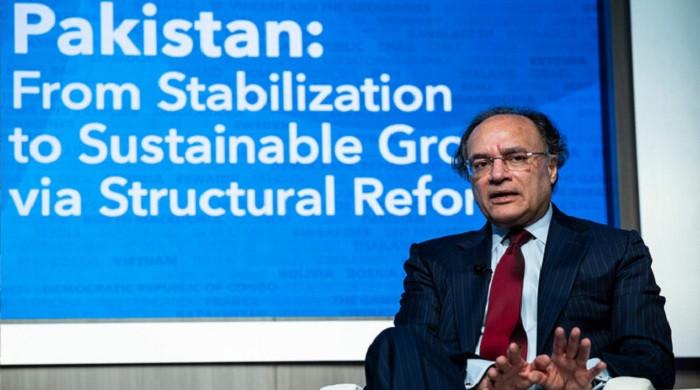Oil hits three-year low on US tariffs, OPEC supply
Crude extended losses after China imposes 34% tariffs on all US imports in retaliation
April 04, 2025

Crude oil prices continued its downward spiral for the second consecutive day on Friday, sinking to their lowest point in more than three years amid US President Donald Trump's aggressive tariffs and the surprise output increase by OPEC+ group.
According to Bloomberg report, benchmark Brent has lost more than 10% in two days, while US futures are also trading at their lowest since 2021. The slump comes amid broad declines across global markets, including commodities from gas to grains.
Oil's downward trajectory began on Thursday by a deluge of tariffs from US President Trump, which threaten both global economic growth and consumption.

Hours later, OPEC+ tripled a planned output hike for May, in what delegates called a deliberate effort to drive down prices to punish members pumping above their quota, the report added.
Crude extended losses on Friday after the official Xinhua News Agency reported that China had imposed 34% tariffs on all US imports in retaliation.
The retreat marks a fresh attempt to break out of the $15 trading range of the past six months. During that period, OPEC+ supply curbs were seen to put a floor under the market, while the group’s ample spare capacity acted as a ceiling. This week’s unexpected production increase raises questions about whether the alliance will continue to defend higher prices.

The dual hit from OPEC+ and tariffs has prompted a rush by traders and Wall Street banks to reassess their outlook for the market. Goldman Sachs Group Inc. and ING Groep NV are among those lowering their price forecasts, citing risks to demand and higher supplies from the producer group.
“The two key downside risks we have flagged are realizing: namely tariff escalation and somewhat higher OPEC+ supply,” Goldman analysts including Daan Struyven wrote in a note. “Price volatility is likely to stay elevated on higher recession risk.”
The pullback has also had a broader impact on key market gauges. Time spreads softened in a sign of expected looser balances, particularly further along the futures curve. At the same time, bearish oil options volumes soared to the highest level on record.
Still, wider supply risks remain. The Trump administration has threatened a maximum-pressure policy on oil-producing nations that are subject to US sanctions, including Iran and Venezuela. Any retreat in prices offers a bigger opportunity to restrict output in those nations without having an inflationary price spike.
“With potential supply disruptions stemming from sanctions and tariffs -- on both sellers and buyers -- oil prices are unlikely to stay below $70 for long,” said Mukesh Sahdev, global head of commodity markets at Rystad Energy.











